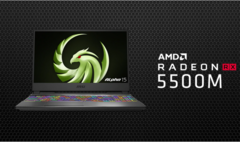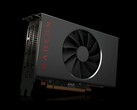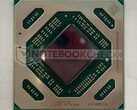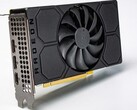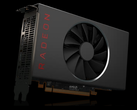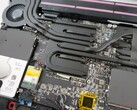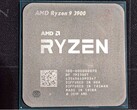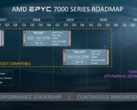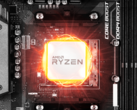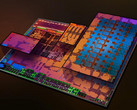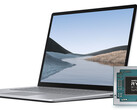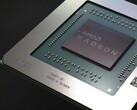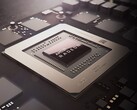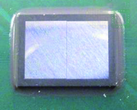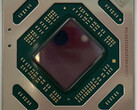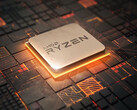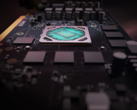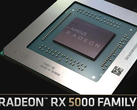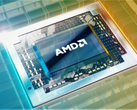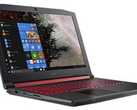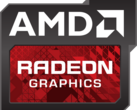AMD today announced its latest desktop and laptop graphics cards, the Radeon RX 5500 and Radeon RX 5500M. The GPUs are targeted at the mid-range gaming market and should be well-suited for gaming at Full HD (1920x1080) on High/Ultra settings for most modern titles.
The RX 5500 and RX 5500M are debuting in a few systems later this year. MSI is expected to launch the world’s first Radeon RX 5500M-powered gaming laptop by the end of this month. HP, Lenovo, and Acer are all expected to release desktop PCs with the RX 5500 before the year’s end. Acer may also release an RX 5500M-powered laptop.
The specs for both cards are as follows:
| Spec | Radeon RX 5500 | Radeon RX 5500M |
|---|---|---|
| Compute Units | 22 | 22 |
| Stream Processors | 1408 | 1408 |
| Boost Frequency | Up to 1670 MHz | 1448 MHz |
| Game Frequency | 1845 MHz | 1645 MHz |
| Half Precision Compute Performance | 10.4 TFLOPS | 9.26 TFLOPS |
| Single Precision Compute Performance | 5.2 TFLOPS | 4.63 TFLOPS |
| Transistors | 6.4 billion | 6.4 billion |
| VRAM | up to 4 GB GDDR6, 128-bit bus | up to 4 GB GDDR6, 128-bit bus |
| VRAM speed | 14 Gbps | 14 Gbps |
| Memory bandwidth | 224 GB/s | 224 GB/s |
| Average power draw | 150 W (550 W PSU recommended) | Unknown at this time |
(Note that the “Game frequency” listed above is the card’s expected GPU clock when running “typical gaming applications, set to typical TGP (Total Graphics Power),” according to AMD. It may not reflect real-world performance.)
Based on the company’s rDNA architecture and built on a 7 nm process, AMD claims that the Radeon RX 5500 will improve performance-per-watt over current GCN cards by 60%, which may position the card as an energy-efficient solution for gamers, especially eSports enthusiasts. AMD also claims the RX 5500 should average up to 37% performance than competitors at Full HD. The RX 5500M should offer up to 30% more power than competitors, according to AMD.Both cards are feature-packed and include AMD’s Radeon Image Sharpening (which sharpens upscaled images), FidelityFX (an open-source tool for post-process effects), and Radeon anti-lag (which should lower input-to-screen response times). Both cards will also support FreeSync monitors and FreeSync 2 HDR.
The Radeon RX 5500M is particularly interesting; AMD hasn’t had a strong GPU presence in the laptop market for years outside of their APU lines, and those are typically found in cheaper laptops. We estimate that the RX 5500M should fall between Nvidia’s GeForce GTX 1660 Ti Max-Q and GeForce GTX 1660 Ti. That would make the RX 5500M a good choice for mid-range gaming laptops in the US $1200-1500 price range.
If AMD can undercut Nvidia on pricing (which is typically how AMD handles business), the RX 5500M may be a winner for Team Red. We’ll get a better idea of how the RX 5500M will perform when we get our hands on the MSI Alpha 15 (the first RX 5500M-powered laptop) later this month. Keep an eye out for that machine to cross our review desk.
Source(s)
AMD




